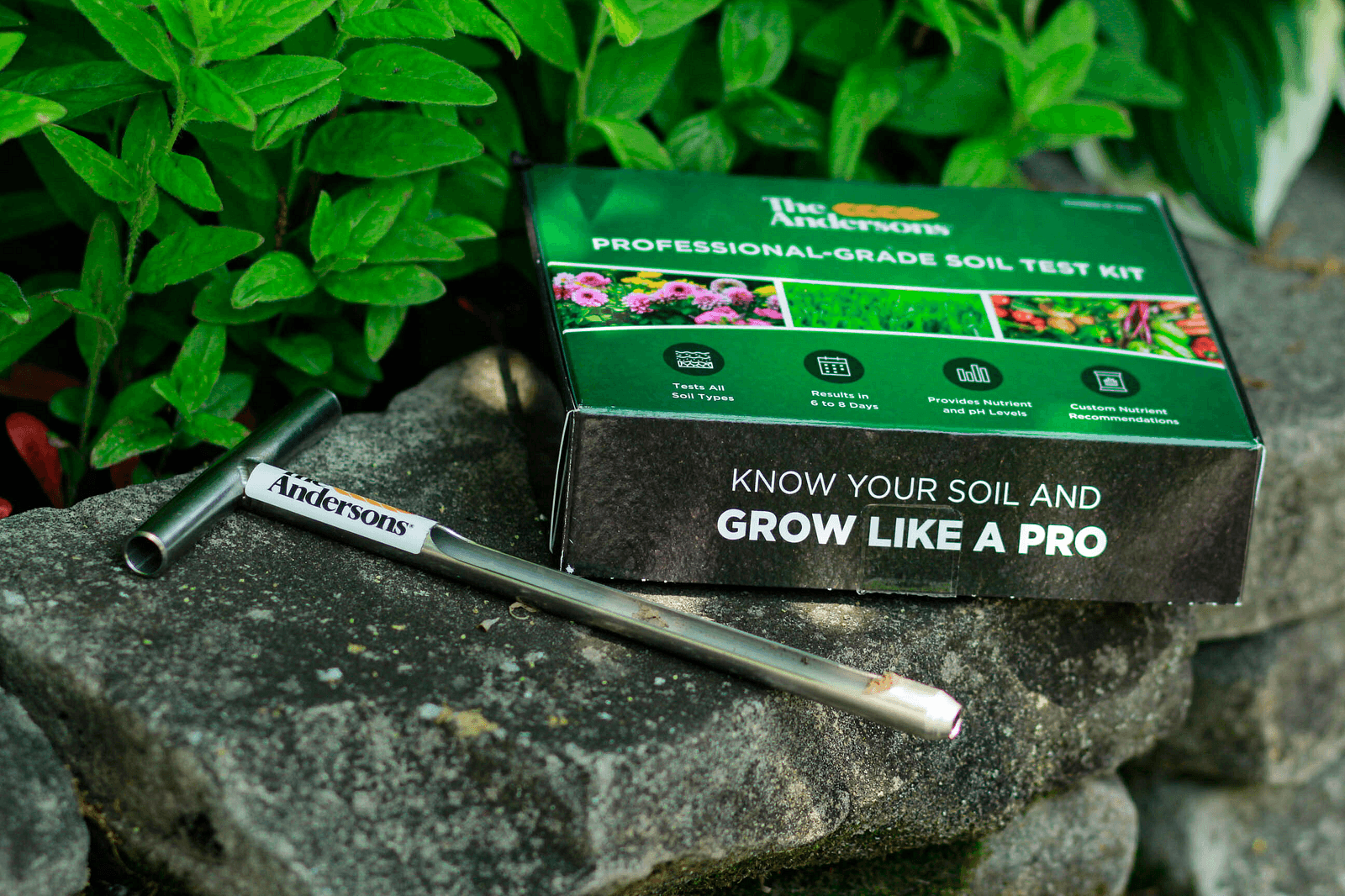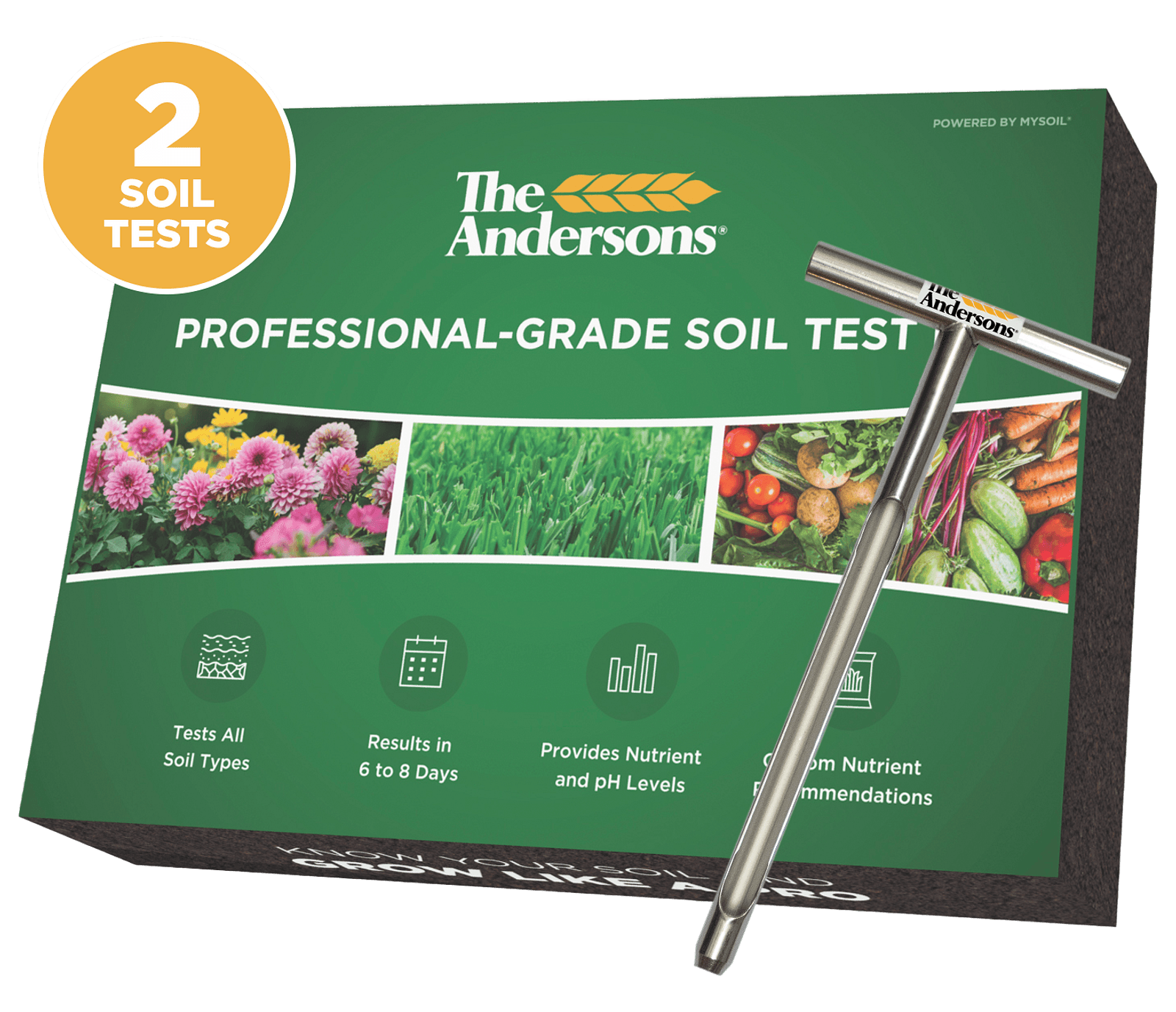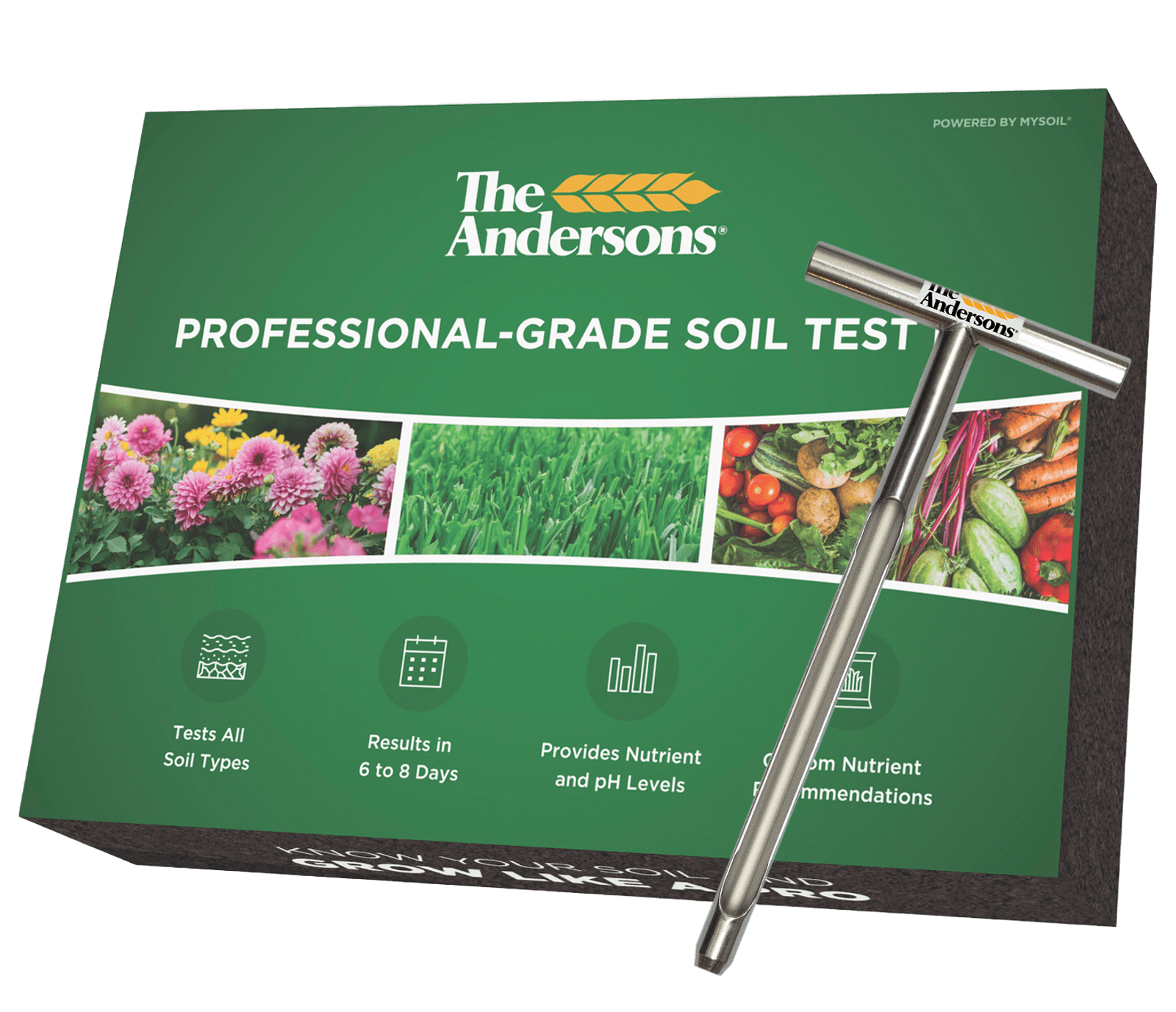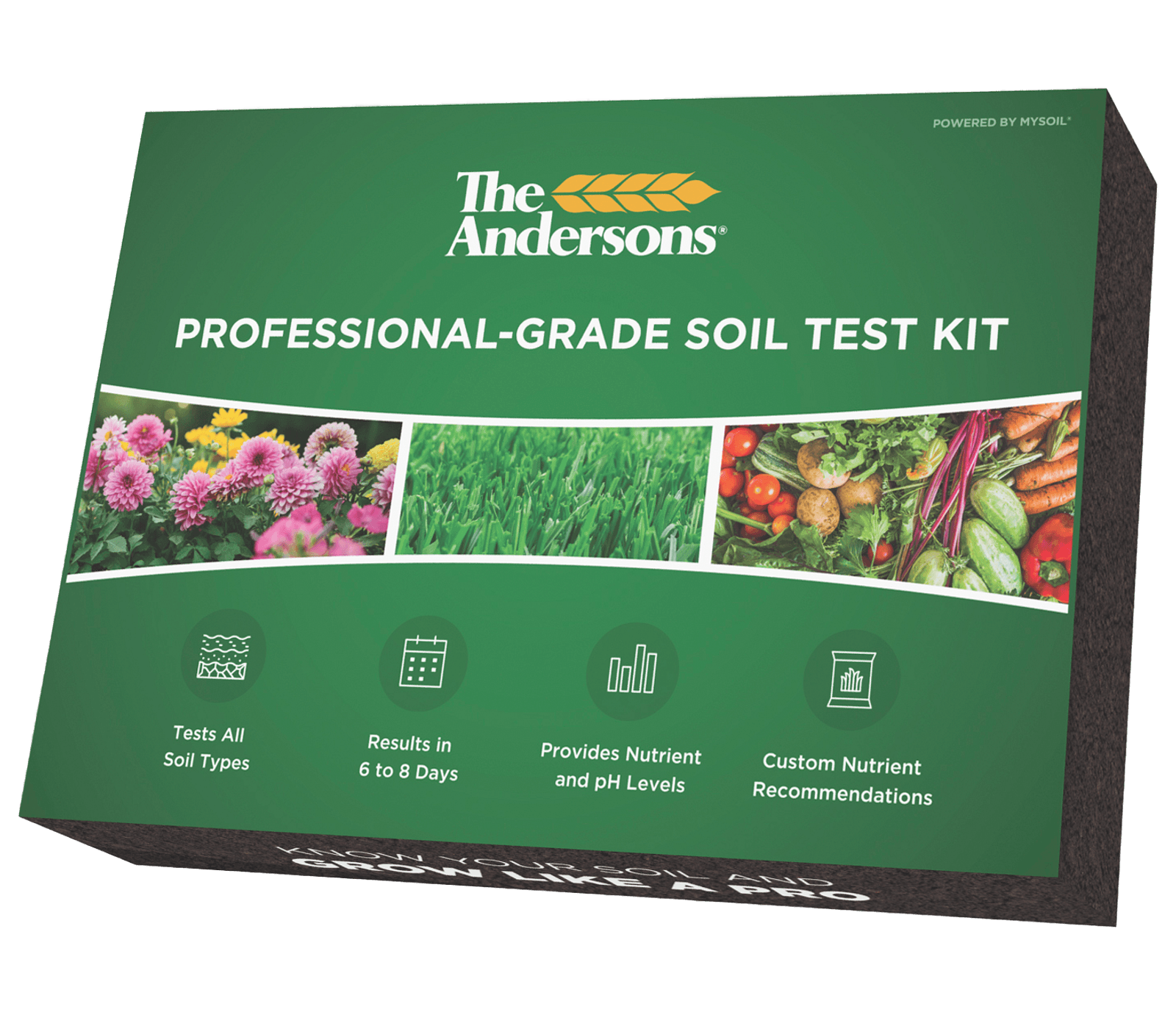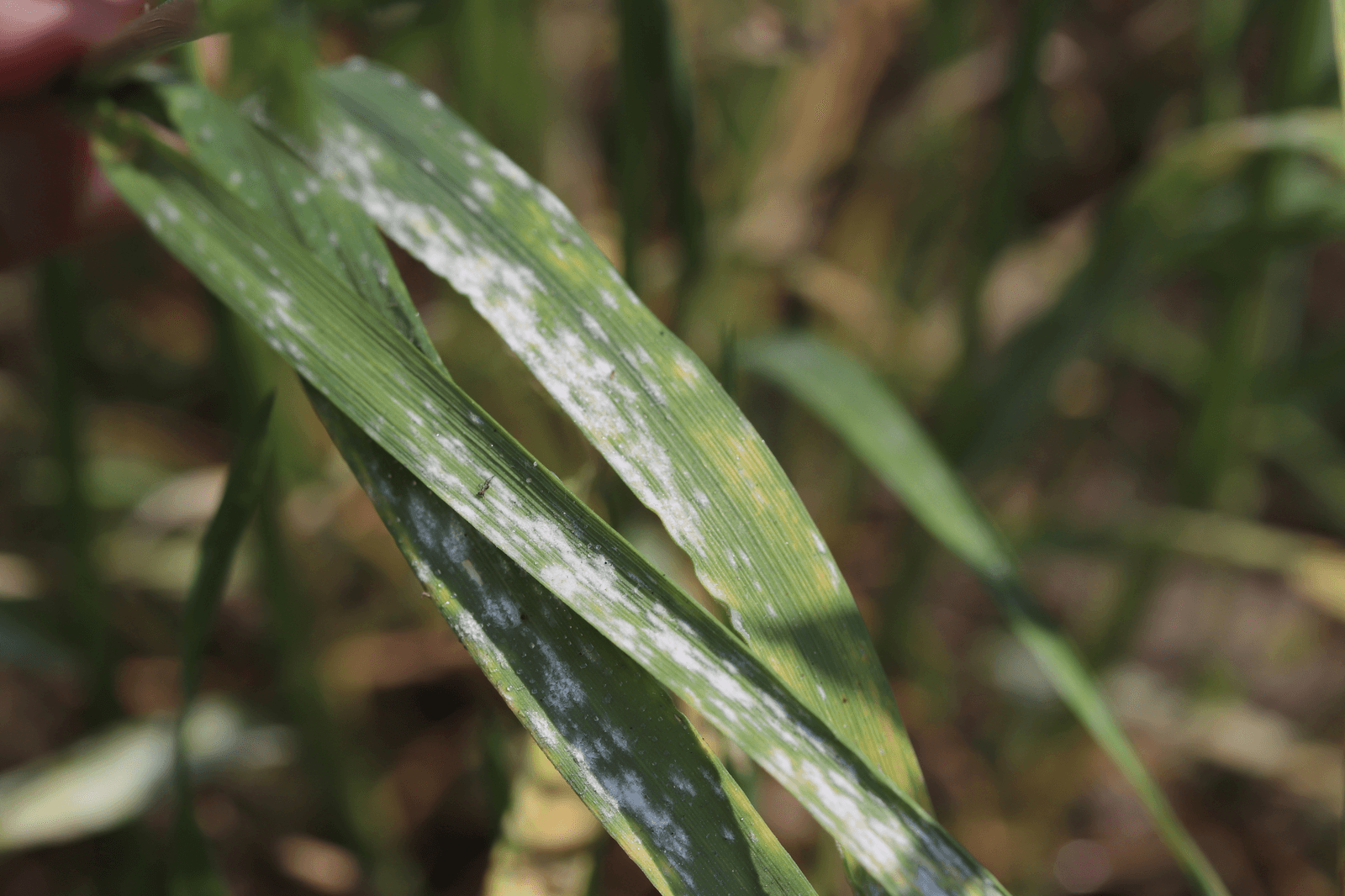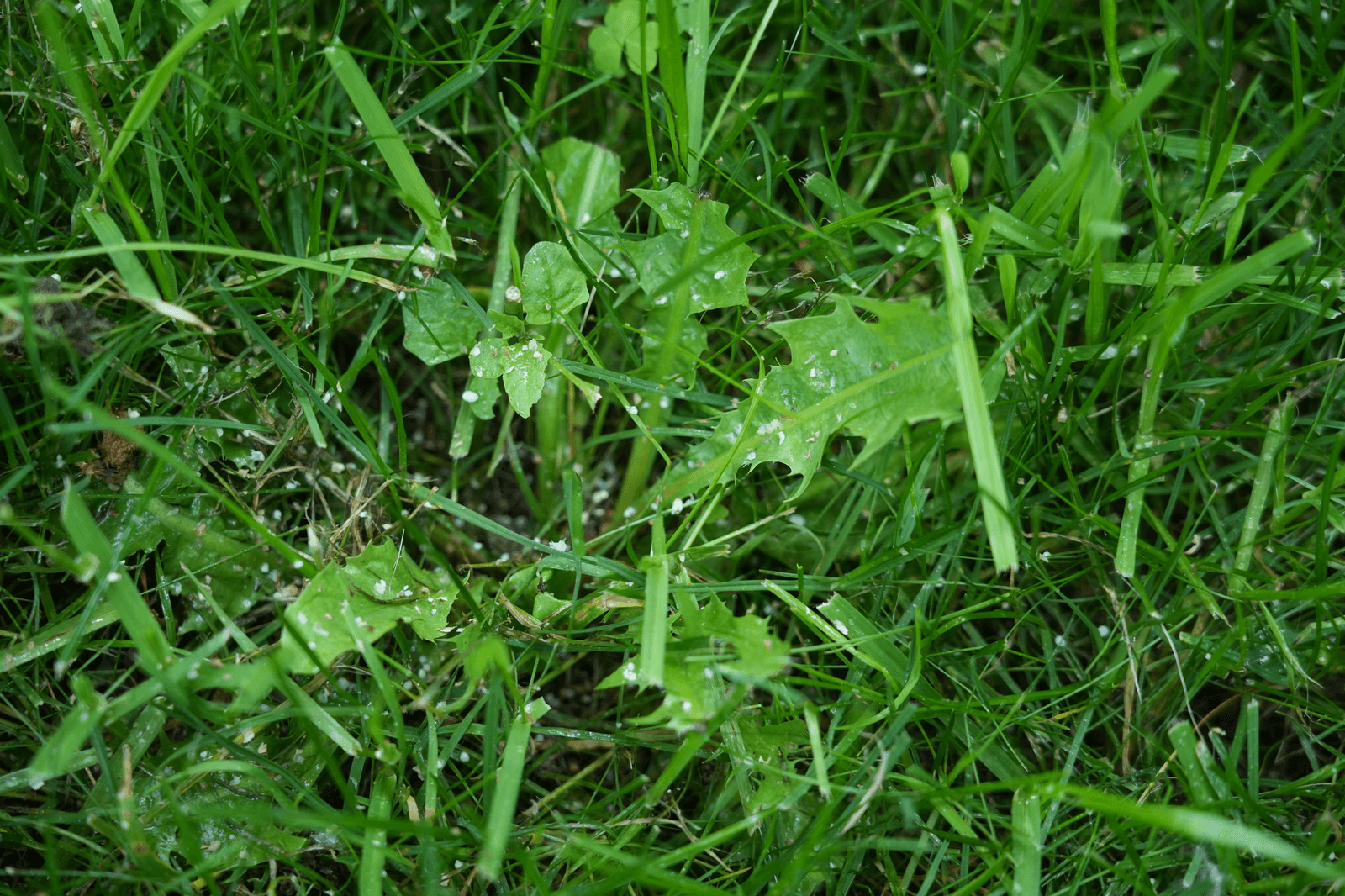DIY lawn care can feel overwhelming. There’s a lot to learn and there’s no way you can know everything before you start. However, knowing where to start is important! Doing a soil test will provide you with tons of knowledge about what nutrients your lawn or garden is lacking or has an abundance of, product recommendations and application rates tailored to your lawn's needs.
The Andersons Soil Test
Soils often contain an abundance of nutrients that may or may not be in available forms to plants as they grow. Conventional soil analysis methods measure nutrient levels by drying and grinding your soil and extracting nutrients with different chemicals. This is still a "guess" with regards to what chemical extraction may best represent the available nutrient levels in your soil. The Andersons Soil Test Kit uses the customer's field-moist soil to absorb available nutrients without using chemicals that can over or underestimate nutrient levels and soil release. This kit does not require your soil to be dried and ground, two processes that change the physical and chemical characteristics of the natural soil. In just 6-8 days after mailing in your sample you'll get results for your soil's macronutrient, micronutrient, and pH levels. Your results will also include Andersons product recommendations tailored to your soil's needs.
Register your kit, pull soil sample, mail sample, get results, grow like a pro. It's really that easy!

1. Register your kit
- Register your kit online at AndersonsHomeandGarden.com/SoilTest
- Create an account (Andersons Home & Garden account credentials do not carry over to soil test login)
- Enter your kit registration number (on sample jar and paper insert)
- Select the sample type
- Add the date of when your soil was added to the sample jar
- Select the approximate square footage of your sampling area (length by width)
2. Collecting a good soil sample
An accurate soil sample provides accurate analysis. Before taking your soil sample, it’s best to evaluate your testing area and divide it into different sections if needed. It is important to collect a representative soil sample. If multiple sample areas are being tested, we recommend separate tests for each area. For each test, we recommend:
- Using a clean soil probe or hand trowel, collect soil from 5-7 separate locations/spots within your desired testing area.
- The soil should be collected from the surface down to a depth of 6 inches (a shallower depth is ok if the soil is too hard). If soil is too hard for the soil probe to be inserted at all, wet the soil first and then insert the soil probe.
- Combine the collected soil in a large bag or bucket and mix thoroughly, breaking up any large chunks. Samples should be free of any large plant material and other debris.
- Using the provided scoop, collect one level scoop of the mixed soil and add it to the jar containing DI water and nutrient adsorbing capsule. Tightly secure lid!
DO NOT DUMP WATER OUT OF JAR
3. Mail your sample to the lab
- MAIL YOUR SAMPLE WITHIN ONE DAY OF ADDING SOIL TO THE JAR
- Place jar in the provided prepaid envelope and seal it
- Place the envelope in your mailbox or any USPS accepted location
- You will receive email notifications of sample progress over the next 6-days or login to your dashboard.
4. Get your results
You will be notified via email when your results are ready (6-8 business days from the time the sample was sent) or login to your dashboard check sample status. Your results will include:
- 13 plant available nutrient levels including Nitrogen and pH (Nitrogen (N) (Nitrate & Ammonium), Phosphorus (P), Potassium (K), Calcium (Ca), Magnesium (Mg), Sulfur (S), Iron (Fe), Manganese (Mn), Boron (B), Copper (Cu), Zinc (Zn), Sodium (Na)).
- The Andersons fertilizer recommendations and application rates
- Links to recommended products
5. Grow better
Apply your recommended products at the direct rates.
Collecting a good representative sample
It is important to collect a representative soil sample. If multiple sample areas are being tested, we recommend separate tests for each area. One test kit for the yard and one for the garden or separate kits for front and backyard. For each test, we recommend:
1. Pull soil from 5-7 different spots/locations to a depth of 6 inches (0-6”)
2. Use a large bag or bucket to collect the 5-7 subsamples
3. Thoroughly mix the 5-7 subsamples
Fill the provided scoop level with the thoroughly mixed composite sample and place it in the sample jar with DI water and nutrient adsorbing capsule. Securely tighten the lid and place the filled jar in the provided prepaid mailing envelope.
When collecting soil samples, we recommend using The Andersons Soil Probe or clean hand trowel.
An additional Resource: Your Local Extension Office
Your local extension office can be an excellent resource to get the information you need to get started. Almost every county has its own extension office. Services provided by extension offices can vary by location, and while this is the case, they provide expert information that is specific to your location.
Extension offices can identify what grass type your lawn has. It is important to keep in mind what type of grass you have when choosing lawn care products because not every product is meant for every type of grass. Applying a product that is not recommended for your grass species could result in less effective results or harm to your lawn.
Extension offices can identify what types of weeds your lawn has. This information will help you choose the appropriate herbicide. Not every herbicide is intended for every type of weed. Ensure to read the product labels when choosing herbicides, and ensure the label says it is effective at treating your type of weed(s).
Extension offices are experts on the weather patterns of your location, as well. They can provide average soil temperatures, and when the best time is to apply specific products based on this information.
Some states have regulations on certain products and maximum application rates. Extension offices can provide you with the regulations your location has.
Click here to find your local extension office.
